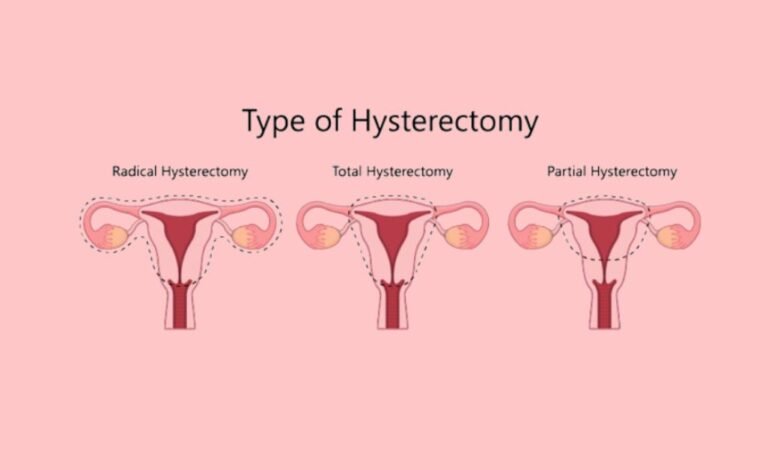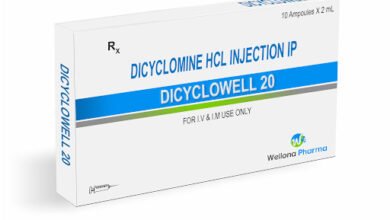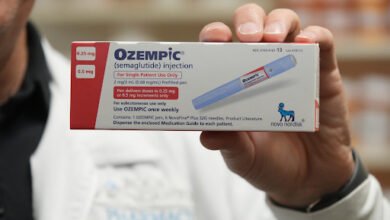What is a Hysterectomy: Procedure & Hysterectomy Recovery

Welcome to the guide about hysterectomy – a common procedure that can affect women’s health. Whether you’re going through it or supporting someone who is, this page is like a map. Hysterectomy is about removing the uterus to solve issues like fibroids or cancer. We’ll talk about the types, benefits, and what happens afterward. Think of us as friendly guides, here to share info, answer your questions, and be with you on this important journey. Understanding this choice is crucial, and we’re here to make it clear and offer support.
What is a Hysterectomy?
Hysterectomy is a surgical procedure to remove the uterus depending on the severity of the condition, the procedure may involve the cervix, some parts of the vagina, and surrounding tissues etc. After this procedure, women can’t get pregnant or menstruate (have periods). Depending on the severity of the condition, hysterectomy may involve removing the complete uterus or surrounding organs and tissues. According to centers for disease control and prevention, around 1 in 3 women in the USA have hysterectomy by the age of 60.
Hysterectomy can be performed through different approaches, such as abdominal, vaginal, or laparoscopic methods. Hysterectomy could be total or partial depending on your condition. Your health condition will determine if your fallopian tubes or ovaries need to be removed.
Here’re the detailed kinds of hysterectomy surgery.
-
Total hysterectomy: In this procedure, the complete uterus and cervix will be removed but leaving the ovaries.
-
Supracervical hysterectomy: Also known as partial hysterectomy. Only the upper part of the uterus will be removed while the cervix is left untouched.
-
Total hysterectomy with bilateral salpingo-oophorectomy: In this procedure, uterus, ovaries, cervix and fallopian tube will be removed. You will start your menopause after removing the ovaries.
-
Radical hysterectomy with bilateral salpingo-oophorectomy: In this procedure, uterus, cervix, fallopian tube and upper part of the vagina and the surrounding tissue will be removed. This procedure is rarely performed, recommended only when cancer is involved.
Who Needs Hysterectomy?
Hysterectomy may be recommended for various reasons when conservative methods or medications fail to provide relief. Common reasons for hysterectomy include:
-
Uterine fibroids: Uterine fibroids are benign (non-cancerous) growth in the uterus that may cause pain, heavy bleeding, or other uterine fibroids complications.
-
Endometriosis: When tissues develop outside the uterus, similar to the lining of the uterus. It may cause fertility issues.
-
Uterine cancer: Hysterectomy is recommended when uterine cancer is detected. It is one of the most common reasons for hysterectomy.
-
Chronic pelvic pain: If persistent pelvic pain is not alleviated with other treatment options.
-
Adenomyosis: A condition where the tissue lining the uterus grows into the muscular wall, causing pain and heavy bleeding.
-
Uterine prolapse: When the uterus descends into the vaginal canal due to weakened supporting tissues.
-
Abnormal Uterine Bleeding: When heavy or irregular bleeding cannot be controlled with other treatments.
-
Chronic Pelvic Inflammatory Disease (PID): Severe cases that do not respond to other therapies.
According to the NHS, hysterectomy is a common procedure between the age of 40-50. It is important to note that hysterectomy is a major surgical procedure which does not impact not only physically but emotionally too. Opting for hysterectomy is not a choice of patient, the doctor will suggest this procedure according to your health condition.
Types of Hysterectomy
1. Laparoscopic hysterectomy
A laparoscopic hysterectomy is a minimally invasive procedure to remove uterus, which offers a quicker recovery with less complications compared to traditional procedure.
Here are the steps of laparoscopic hysterectomy to give you a better understanding of the procedure:
-
First of all, the doctor will sedate you with anesthesia so that you won’t feel pain and discomfort during the procedure.
-
Then the surgeon will make a few incisions in your abdomen to access the uterus.
-
Next, the surgeon will insert a thin laparoscopic (a thin tube with a camera attached) to see inside the abdomen properly.
-
Then the surgeon will pump a gas (carbon dioxide) to pump the abdomen, so that it will create a better space.
-
Then the surgeon will insert other small instruments to seal the blood vessels and prevent bleeding after hysterectomy.
-
With the help of the instruments, the uterus is cut into small pieces and extracted out from the incisions.
-
After removal of the uterus, the surgeon will close the wound with tapes of stitches.
2. Abdominal hysterectomy
This is an invasive procedure to remove the uterus through the abdomen (belly). This is a major procedure and may take a longer period to recover after the procedure. Abdominal hysterectomy also impacts hormonal level and fertility.
Here’s a detailed step of the procedure.
-
First of all, the doctor will give a general anesthesia to make you unconscious throughout the procedure.
-
Then the surgeon will make a large incision of 6-8 cms in the abdomen to remove the uterus.
-
Carefully detaching the uterus by cutting blood vessels and tissues, the doctor will then remove it through the large incision made in abdomen.
-
Following the removal, the incisions will be closed by stitching or stapling layers of tissue and muscle.
-
Once the procedure is completed, you will be shifted to the recovery room to monitor the condition until the anesthesia wears off.
3. Vaginal hysterectomy
This is a surgical procedure when the uterus is removed through the vagina. This procedure is commonly used for various gynecological problems such as uterine fibroids, endometriosis, or abnormal bleeding. It offers shorter recovery and less noticeable scarring.
Here are the steps involved throughout the procedure:
-
Same as any surgery, the surgeon will administer anesthesia, so you won’t feel pain and discomfort during the procedure.
-
Then the small incisions are made in the vagina to access the uterus.
-
By inserting instruments through the vagina, the surgeon will detach the uterus from the blood vessels and the surrounding organs and extract it out from the vagina.
-
Then the incisions inside the vagina will be closed with dissolvable stitches.
4. Single incision hysterectomy
This procedure is called salpingo-oophrectomy. Salpingectomy is the removal of the fallopian tube and Oophorectomy is the removal of the ovary. It offers fast recovery and less chances of complications etc.
In single-hole surgery, a small cut is made inside the navel (umbilicus). It is made in a way that the scar is literally invisible after the operation. The entire surgery is performed through a single small incision measuring about 1.5 to 2.5 cms.
Here are the steps involved in the procedure:
-
First, you will be sedated under anesthesia to prevent pain and discomfort throughout the procedure.
-
Then a single incision is made in the navel to access the uterus.
-
Then the doctor will remove the uterus with the help of laparoscope or robotic technology.
-
Once the uterus is removed, the surgeon carefully closes the incision with sutures or surgical staples.
How Long Does it Take to Recover After Hysterectomy?
The hysterectomy recovery time can vary depending on the type of procedure and individual factors. Here’s a general overview:
You may stay in the hospital for 2 to 3 days, and full recovery usually takes a few weeks.
Since this approach involves no external incisions, recovery may be quicker than with abdominal hysterectomy.
This minimally invasive approach typically results in a faster recovery compared to abdominal hysterectomy.
The recovery time may vary for each individual depending on the self care at home and the patient’s age. Here are some common self care tips at home to boost the recovery after hysterectomy.
-
Follow all the instructions given by your gynecologist.
-
Avoid strenuous activities during the initial few weeks.
-
Take all the medications on time.
-
Maintain hygiene at the surgical site.
-
Keep the surgical site clean and dry.
-
Do mild activities to maintain the blood circulation.
-
Increase the activity level only after the consultation of your doctor.
-
Avoid sex after hysterectomy for up to 2 months.
-
Take a healthy and balanced diet rich in green leafy vegetables and fruits.
-
Include fiber rich foods in your diet to prevent constipation.
-
Take proper rest and allow your body time to heal.
Self care at home is important after any surgical procedure regardless of its type. Above mentioned are the recovery tips that will help you to recover after hysterectomy and get back to your normal routine as soon as possible.
Benefits of Hysterectomy
Hysterectomy is a surgical procedure to remove the uterus and it offers various health benefits to some medical conditions. It includes:
-
Relief from gynecological conditions such as uterine fibroids, endometriosis, adenomyosis, and chronic pelvic pain.
-
It can cure uterine cancer, ovarian cancer or ovarian cancer by removing these organs completely.
-
It may provide relief to chronic pelvic inflammatory disease when other conservative methods or medications failed to do so.
-
It may also improve the quality of life for those women who are dealing with intense pain and discomfort due to various gynecological conditions.
-
For women experiencing heavy or irregular menstrual bleeding that does not respond to other treatments, a hysterectomy can provide a permanent solution.
Side Effects of Hysterectomy
While hysterectomy surgery is completely safe and effective. However, there are some potential risks and side effects of hysterectomy, including:
-
Scar tissue formation
-
Formation of blood clots
-
Scarring
-
Heavy bleeding
-
Infection to the surgical site
-
Adverse reaction to anesthesia
-
Intense pain
-
Injury to the surrounding organs such as bladder, intestines, uterus, blood vessels, etc.
What to Expect After a Hysterectomy?
After the surgery, if they took out your ovaries, you might go into menopause and stop having periods. If they didn’t remove the ovaries, menopause could start earlier. But no matter what, after the surgery, you won’t be able to have kids anymore. There’s a very rare chance of a problem called ectopic pregnancy if they left your ovaries and fallopian tubes. It’s an emergency when a fertilized egg starts growing outside your uterus.
While recovering from the surgery, most people are told not to have sex and to avoid lifting heavy things for about 6 weeks.
Some side effects after a hysterectomy surgery could include light bleeding for up to 6 weeks and some irritation around where they cut.
If they took out your ovaries, you might have menopause symptoms like hot flashes, lower sex drive, trouble sleeping, and vaginal dryness. If these bother you, talk to your doctor.
After the surgery, many people feel better and say it helped fix their main problem, like pain or heavy periods.
Advice for Husbands after Hysterectomy
Hysterectomy is a common gynecological procedure for women but it makes a huge impact physically or emotionally. Here’s a piece of advice for husbands after hysterectomy.
-
Offer emotional or mental support during her hysterectomy recovery time.
-
Help her during her household chores, cooking, baby sitting etc so that she can take rest properly.
-
Initiate open communication with her to know about her feelings and concerns she might be feeling after the procedure.
-
Respect her comfort level during intimacy and have an open communication before indulging into sexual activity.
-
Acknowledge her recovery steps to boost her up and reinforce the progress.
-
Take care of her medicines and diet properly.
-
Help her schedule appointments with the doctor frequently.
Conclusion
To sum it up, we’ve talked about hysterectomy, covering why it’s done, the different types, and what to expect during recovery. Whether it’s for you or someone you care about, we’re here to be a helpful guide. Remember, everyone’s experience is different, and it’s essential to talk to your healthcare team. We’re here to share information, answer your questions, and be a supportive companion on this medical journey.
Popular searches:
Kill tooth pain nerve in 3 seconds permanently | how to get unbloated in 5 minutes | how i cured my eustachian tube dysfunction | how to make yourself sick | ligma disease | how to maintain erection for 30 minutes | heart stent surgery | how i cured my lichen sclerosus | allergic asthma | signs of prostate cancer | ankle strain vs sprain | keytruda side effects | foods that cause acid reflux | supplements to lower blood pressure | multiple sclerosis symptoms | can you drink alcohol while breastfeeding | dry skin in winter | joint pain causes | uterine fibroids symptoms | What are the benefits of Fenugreek | ketamine infusion | social anxiety test | When Am I Ovulating | Benefits of Dermaplaning
Frequently Asked Questions
What is life expectancy after total hysterectomy?
Total hysterectomy itself doesn’t impact life expectancy; it depends on the individual’s overall health and the reason for the surgery.
After a hysterectomy what fills the space of the uterus?
After a hysterectomy, the space formerly occupied by the uterus is typically left empty.
Where does sperm go after hysterectomy?
The sperms have nowhere to go, they are simply left out from the vagina during normal secretions.
How much does a hysterectomy cost?
The hysterectomy cost may vary depending on the type of procedure, country, city, doctor’s fee, patient’s overall condition etc. It is better to consult a doctor and get personalized advice based on your condition.
Can I have sex 3 weeks after hysterectomy?
Yes. it is safe to have sex 3 weeks after hysterectomy but getting doctor’s advice is better to prevent any complications etc.
Do women face any changes in sexuality after hysterectomy?
Some women may experience changes in sexuality after a hysterectomy, including shifts in libido, arousal, and orgasm, but effects vary individually.
What are the symptoms of torn internal stitches after hysterectomy?
Symptoms of torn internal stitches after hysterectomy may include increased pain, swelling, or discharge at the incision site.
Can a woman have vaginal cancer after hysterectomy?
Yes, a woman can still develop vaginal cancer after a hysterectomy if the cancer originates in the cells of the vagina.
Source link
#Hysterectomy #Procedure #Hysterectomy #Recovery



